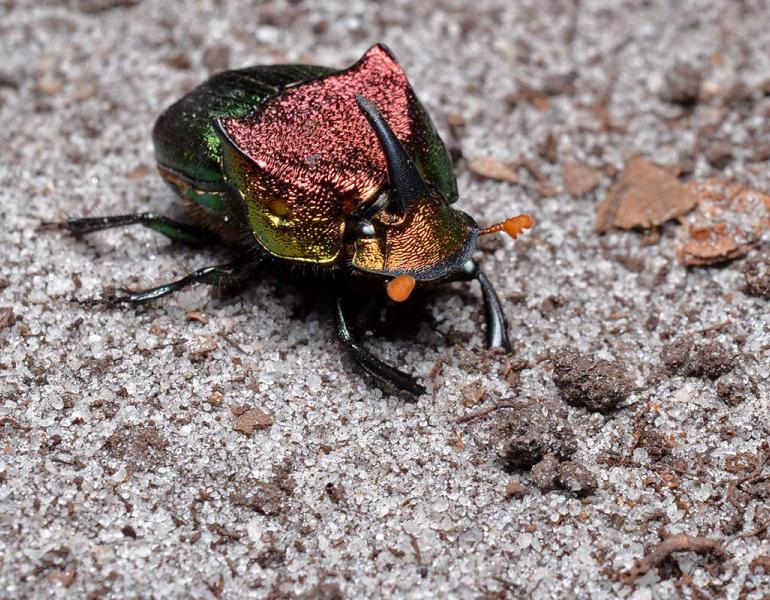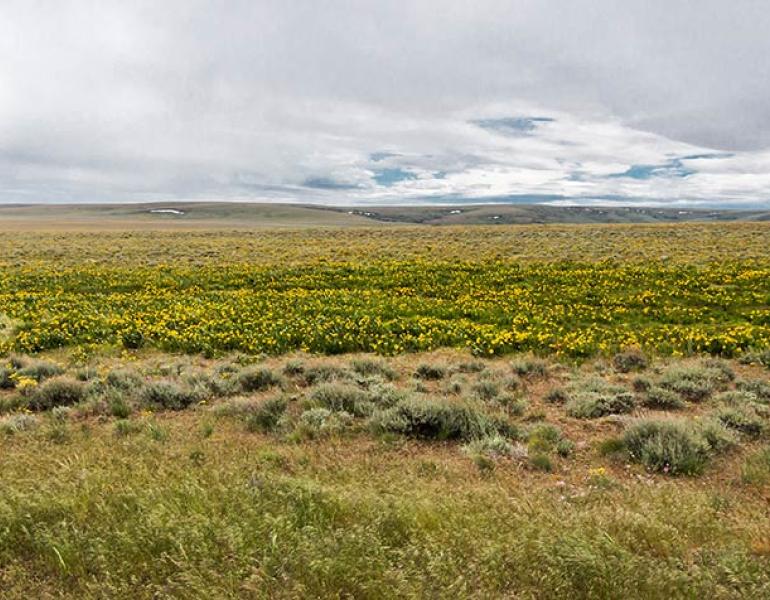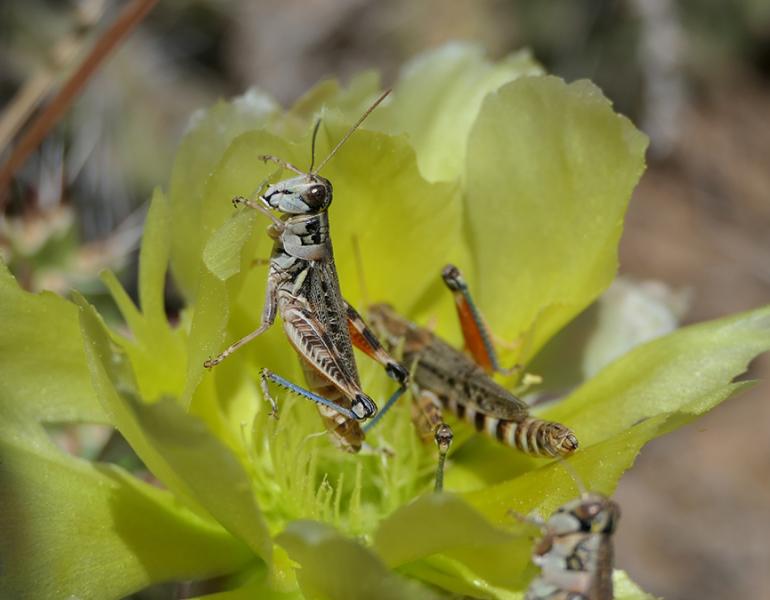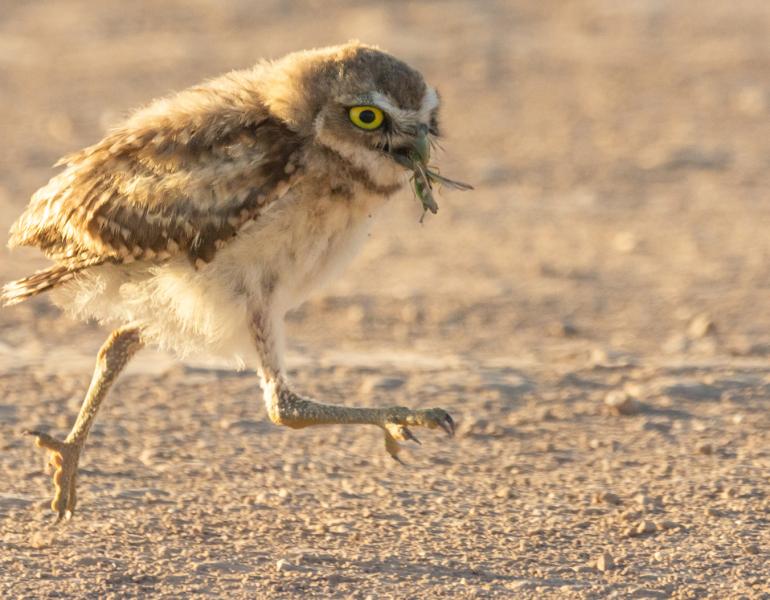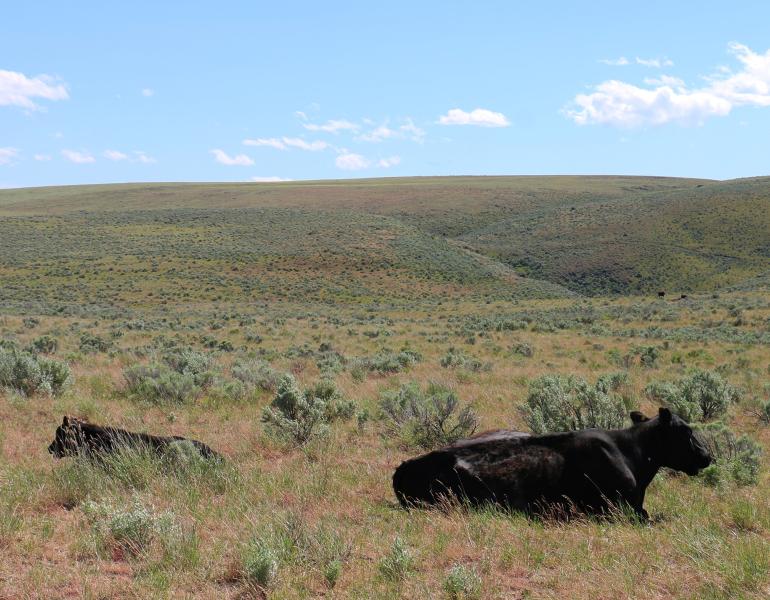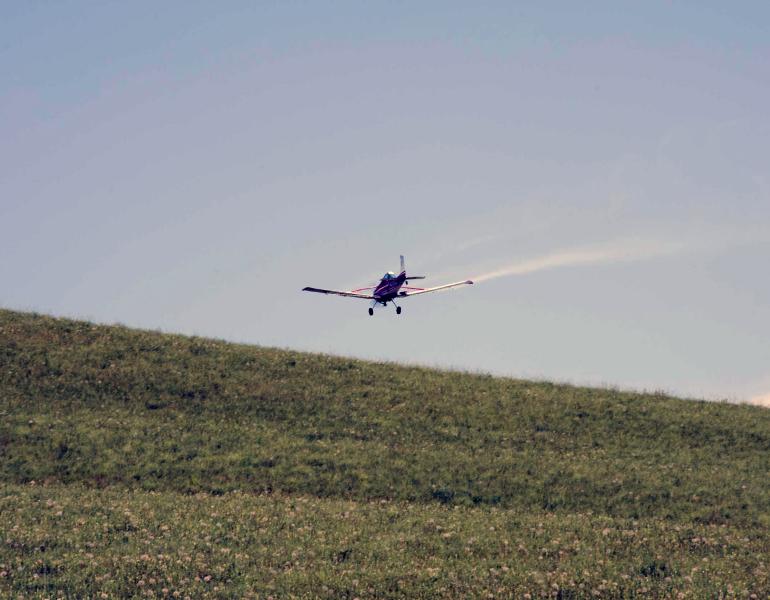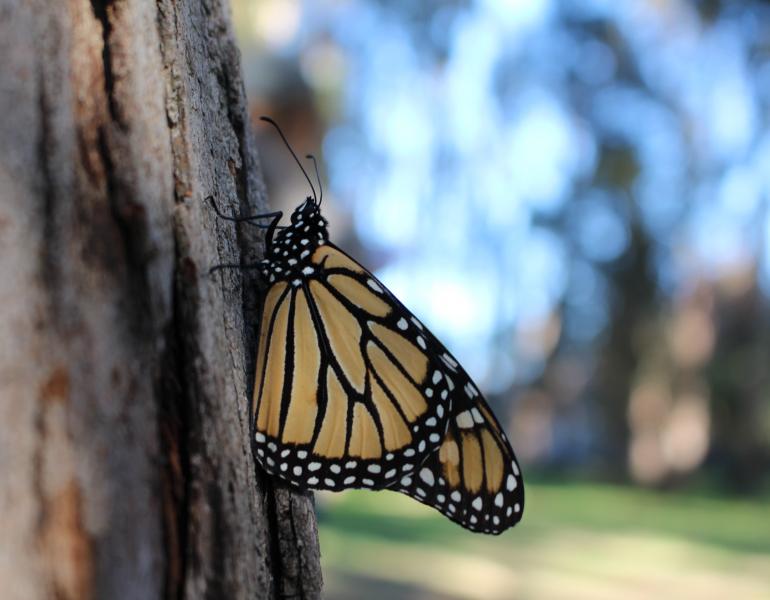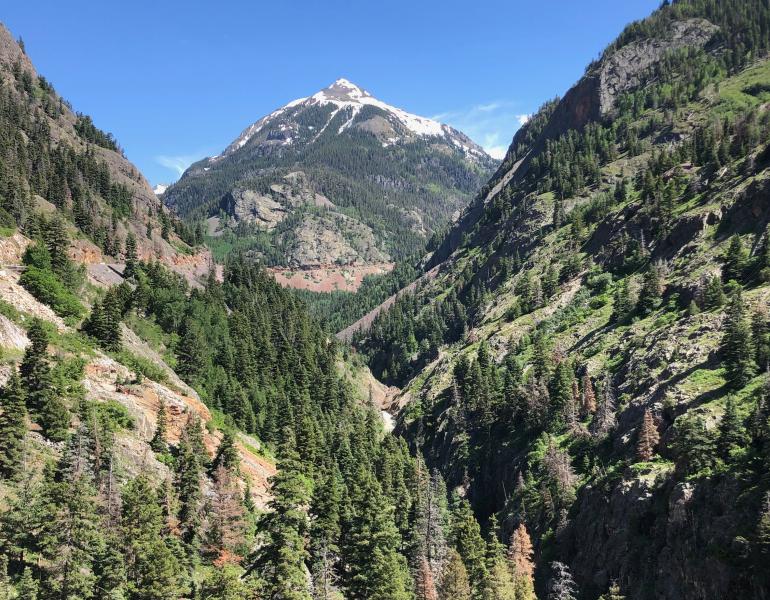Dung beetles are a key component of a healthy ecosystem, in both natural and agricultural areas!
Rangeland
Court Tells Federal Agency to Rethink Widespread Pesticide Spray Program
Xerces won a lawsuit that will help to reshape the federal grasshopper management program into one that better supports everyone: ranchers, farmers, and wildlife.
Inspiration for Pollinator Conservation: Wildflowers on Rangelands
Sarah Hamilton Buxton shares her path to pollinator conservation, and her work to promote more diverse plant communities on rangelands of the Great Plains!
How Advocates Stopped Aerial Insecticide Spray on 25,000 Acres of New Mexico Natural Areas
Within a week of Xerces sounding the alarm about upcoming widespread toxic insecticide spraying in natural areas, New Mexico residents and organizations were collaboratively advocating for the plan to be canceled.
Love for the Land Inspires Pollinator Habitat Conservation Across the Driftless Area
The Driftless Area is a magical and rugged terrain in the midwest, covered in hardwood forests, oak savannas, prairies, and wetlands that provide unique habitat for wildlife of all kinds. In modern times, various factors have changed the landscape. A shared love of the land has inspired a community effort to restore these areas so that its inhabitants can all thrive together.
Selecting seeds for bison, pollinators to share the land
While designing a unique seed mix for restoration takes time, it can be well worth the extra effort. The right mix of plants can boost the long-term ecology and function of a landscape and can be particularly important for working lands – those with multiple uses like agroforestry, grazing and silvopasture. In this article, Farm Bill Pollinator Conservation Planner Karin Jokela describes making the perfect mix to balance the needs of bison and pollinators.
Burning the Land
Fire has been used to manage prairies for centuries, and remains an important tool for grassland managers to reduce woody plant encroachment and increase flower production of key nectar and pollen sources. However, burning entire landscapes is problematic for pollinators, and fire must be used carefully.
Protecting Grassland Ecosystems from Insecticides
Grasshoppers play a central role in rangeland ecosystems and food webs. Herbivory by grasshoppers speeds up the recycling of nutrients from plants, and they are a vital part of the diet of dozens of other rangeland animals. Aerial spraying campaigns to control grasshoppers have wide impacts on rangeland ecology. Xerces staff are working to reduce spraying and protect rangeland wildlife.
Great Plains Rangelands Are Important Habitat for Pollinators
Rangelands of the Great Plains are a highly diverse—and endangered—ecosystem filled with subtle beauty that is often underappreciated. These landscapes evolved with natural disturbances, such as grazing and wildfire. Maintaining disturbance through active management is essential for healthy rangelands and pollinators.
Planned Grasshopper Sprays Threaten Monarchs, Bees, Beneficial Insects, and Birds Across Western Rangelands
Rangelands of the western United States are home to many amazing species of wildlife from sage-grouse to butterflies, and frequently used for cattle grazing. A significant proportion of rangelands are publicly owned, so how they are managed, especially when it comes to grasshopper control, is a topic of great concern.
Mitigating the Effects of Climate Change On Grassland Butterflies
Grasslands provide important habitat for a range of butterflies, some of which rely on these open sunny habitats for survival. Climate change adds an extra layer of threat and concern.
Home on the Range: Grasshoppers and Insecticides on Western Rangelands
Usually considered competitors with livestock for forage, grasshoppers can actually be beneficial to rangelands by affecting plant composition, and even influence the soil microbial communities. They also play a critical role in the grassland food web. Despite the inability to tie grasshopper densities to the potential for damage, planes and ground crews are deployed every summer to spray against grasshoppers.
Thanksgiving Count Shows Western Monarchs Need Our Help More than Ever
The western monarch population remains at a critical level. With some luck and a lot of hard work, we have hope that we can save this incredible migration.
Pollinator Conservation Program Digest – September 2019
September’s featured staff members have been providing Monarch and Pollinator Habitat Kits to select organizations in California, training Colorado Department of Transportation staff on roadside pollinator habitat, and attending the America’s Grasslands Conference, held this year in North Dakota.
Pollinator Conservation Program Digest – April 2019
April’s featured staff—all Farm Bill Pollinator Conservation Planners—are driving the adoption of cover cropping in California, guiding farmers to support pollinators in Maine, and teaching the importance of rangeland to pollinator conservation in North Dakota.


